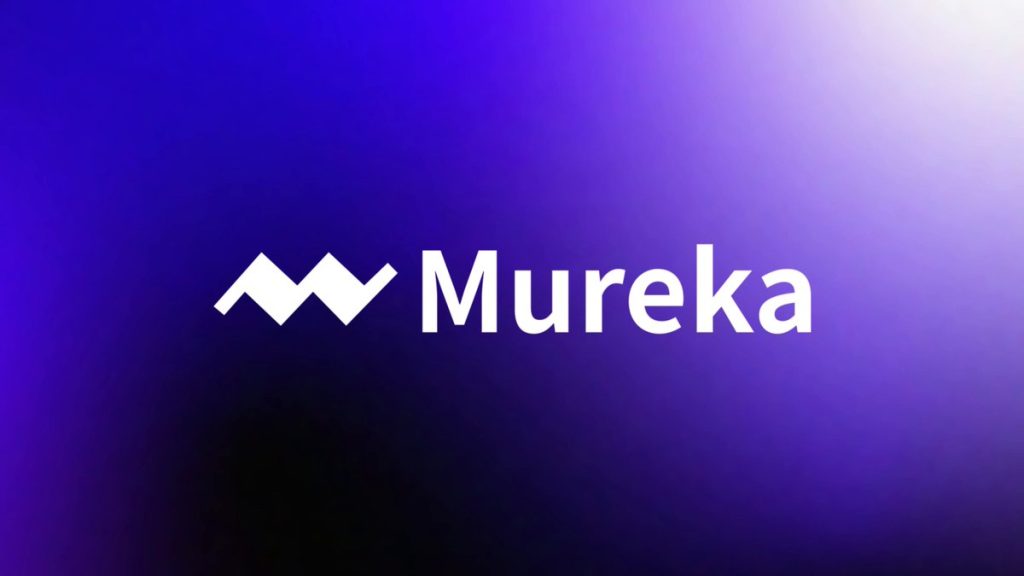If you’ve been anywhere near social media or a decent R&B playlist lately, you’ve undoubtedly felt the dreamy, retro-infused pull of “Cry About It!”. This track is the much-anticipated first collaboration between the Colombian-American superstar Kali Uchis and the soulful songstress Ravyn Lenae. Released on September 11, 2025, it’s a masterclass in modern nostalgia that instantly captivated listeners worldwide.

A Glimpse into “Cry About It!”: Lyrics and Creation
“Cry About It!” serves as the lead single from Sincerely: P.S., the deluxe edition of Uchis’ fifth studio album, Sincerely. The song is a bilingual ballad that blends English and Spanish with a taunting, yet empowering message. It’s a sweet-sounding dismissal of a rival’;s envy and sorrow, wrapped in a lush, doo-wop-inspired package. As Uchis herself put it on Instagram, “I wrote this song to celebrate the fact that I’m gonna keep getting better/hotter/more abundant etc & nobody can stop me MUAHAHAHAH.”
Too bad (Too bad), so sad (So sad)
You should cry about it (Oh-oh)
Llora, llora, hasta que ya te deje de doler
Too bad (Too bad), so sad (So sad)
Go cry about it
The track was teased during Uchis’s live shows before its official debut on The Tonight Show Starring Jimmy Fallon, where the duo delivered a stunning, ballroom-themed performance that perfectly matched the song’s aesthetic.
Kali Uchis and Ravyn Lenae’;s debut performance of “Cry About It!” on The Tonight Show.
Musical Style & Production Analysis: A Modern Doo-Wop Dream
From a producer’s standpoint, “Cry About It!” is a fascinating study in blending old and new. Co-produced by Kali Uchis and Spencer Stewart (known for his work with artists like Laufey and Jessie Reyez), the track is a love letter to the doo-wop and R&B ballads of the ’50s and ’60s, but viewed through a distinctly modern, ethereal lens. Let’s break down what makes it tick.
Ravyn Lenae’s sharp, clear vocals provide a perfect counterpoint to Uchis’s hazy delivery.
The Doo-Wop Foundation
The core of the song’s instrumental is built on classic doo-wop elements. You can hear it in the swinging, triplet-based piano chords and the simple, effective bassline that walks you through the progression. The percussion is minimal, often just a light snare and tambourine, keeping the focus squarely on the vocals and harmonies. This choice creates a sense of warmth and nostalgia, what one reviewer called a “cheery, almost Christmas-like march” in its opening moments .
Vocal Production and Harmony
The vocal arrangement is where the song truly shines. Kali Uchis’s voice is processed with a hazy, dream-like reverb, making it feel both intimate and distant, like a memory. In contrast, Ravyn Lenae’s vocals are sharper, clearer, and more present in the mix. This contrast is brilliant; it’s as if Uchis is the confident, almost untouchable figure, while Lenae delivers the more direct, cutting observations. The background harmonies are lush and layered, stacking up to create that classic “wall of sound” feel, another nod to vintage production techniques but executed with modern clarity.
| Element | Description | Effect |
|---|---|---|
| Instrumentation | Swinging piano, walking bassline, minimal percussion (tambourine, light snare), subtle strings. | Creates a nostalgic, doo-wop-inspired foundation. |
| Vocal Production (Uchis) | Hazy, soulful delivery with significant reverb and delay. | Ethereal, dreamy, and slightly detached quality. |
| Vocal Production (Lenae) | Sharper, clearer, and more forward in the mix. | Provides a direct, grounded contrast to Uchis’s vocals. |
| Harmonies | Lush, multi-layered background vocals creating a “wall of sound.” | Enhances the vintage feel and adds emotional weight. |
| Arrangement | Classic verse-chorus structure with a distinct bridge for Lenae’s verse. Builds dynamically. | Familiar and accessible, allowing the lyrical narrative to unfold clearly. |
Modern Touches
Despite its retro heart, the production is undeniably contemporary. The low-end is clean and present, with a subtle sub-bass that gives it weight on modern sound systems. The overall mix is polished and wide, a far cry from the mono recordings of the era it emulates. This fusion of vintage songwriting and modern sonic fidelity is what makes the track feel both timeless and fresh. It’s a perfect example of how to draw inspiration from the past without creating a simple pastiche.

“Cry About It! Lyrics” Meaning: A Story of Rivalry and Empowerment
At its core, the Cry About It! lyrics tell a story of romantic rivalry, but it’s far from a simple tale of heartbreak. Instead, it’s a confident, almost playful taunt directed at a former lover’s new partner—or perhaps an ex-partner watching from the sidelines. The song’s narrative is a masterclass in flipping the script, turning potential victimhood into a position of power.
The Narrative: Two Sides of the Story
Kali’s verses establish her as the “winner”; in this romantic triangle. She sings directly to the other person, acknowledging their pain (“Yo sé que te duele / Cuando escuchas mi nombre” – “I know it hurts you / When you hear my name”) but offering no sympathy. Instead, she frames their sadness as a consequence of their own envy. The chorus, “Too bad, so sad, you should cry about it,” is the ultimate dismissal—a sharp, sarcastic piece of advice that borders on mockery.
Ravyn Lenae’s verse adds a fascinating layer of complexity. She takes on the perspective of the “other woman,” but one who feels no guilt. Lines like, “Creeping under the surface / I know I make you nervous / Tell me, what is the purpose / If it’s out of my control?” suggest an inevitability to the situation. She positions herself not as a malicious homewrecker, but as an irresistible force of nature, further disempowering the person being addressed. It’s a clever narrative device that reinforces the song’s central theme of unapologetic self-assurance.
Kali Uchis
The main narrator, delivering a message of empowerment and confidence.
Ravyn Lenae
The collaborator, adding a sharp, alternative perspective to the narrative.
Emotional and Symbolic Meaning
Beyond the surface-level drama, the song is a powerful anthem of self-worth and moving on. The act of “crying about it” is presented not as a moment of weakness, but as a necessary, almost prescribed, step for the other person to process their loss and move on (“Llora, llora, hasta que ya te deje de doler” – “Cry, cry until it stops hurting”).
Symbolically, the song rejects the idea that women should feel guilt or shame in romantic competition. Instead, it celebrates confidence, abundance, and the continuous journey of self-improvement. Uchis’s stated inspiration—celebrating getting “better/hotter/more abundant”—is the true emotional core. The song’s meaning is less about the man involved and more about the two women’s relationship with themselves and each other, one defined by confidence and the other by envy.

How to Create a “Cry About It!” Vibe with Mureka AI
Inspired by the dreamy, retro-modern sound of “Cry About It!”? As a music producer who’s spent years exploring both traditional and AI-driven tools, I can tell you that capturing that specific magic is an exciting challenge. With a platform like Mureka, you can generate the foundational elements and unique textures needed to build a similar track. Let’s walk through how I’d approach this using Mureka’s AI music creation tools.

Step 1: Generating the Core Idea with a Prompt
The first step is to give the AI a clear direction. “Cry About It!” is a mix of styles, so a detailed prompt is key. I’d start by going to Mureka’s creation page and using a prompt that blends genre, mood, and instrumentation.
Prompt Idea: “A dreamy, bilingual R&B ballad with a 1950s doo-wop feel. Featuring swinging piano chords, a walking bassline, lush female vocal harmonies, and a touch of modern soul. Mood: nostalgic, confident, slightly melancholic.”
This prompt gives Mureka’s ai music generator all the necessary keywords: “doo-wop,” “dreamy R&B,” “swinging piano,” and “lush harmonies.” The AI will analyze these concepts and generate a few instrumental options that serve as a fantastic starting point.

Step 2: Refining the Instrumental and Arrangement
Once Mureka generates the initial tracks, I’d listen for the one that best captures the “Cry About It!” vibe. From there, I’d use the Audio Edit features. The beauty of a tool like Mureka is that you’re not stuck with the first output. I can isolate specific parts (stems) like the piano or bass.
- Piano: I might ask the AI to make the piano performance a bit more “lazy” or “swinging” to nail that doo-wop rhythm.
- Bass: I’d ensure the bassline has that classic “walking” feel, moving smoothly between chord changes.
- Drums: I’d keep the drums simple, perhaps even generating a separate track with just a tambourine and a soft snare hit on the backbeat.
Step 3: Crafting the Vocals with AI Assistance
This is where it gets really interesting. “Cry About It!” is defined by its dual vocalists. With Mureka’s Pro plan, you can use the Voice Cloning feature. Here’s a hypothetical workflow:
- Main Vocal (Uchis’s Vibe): I’d write lyrics with that confident, slightly taunting tone. Then, I could use Mureka’s text-to-speech or singing generator, selecting a voice model that’s hazy and soulful. I’d then process this vocal track with a good amount of reverb to create that dreamy effect.
- Second Vocal (Ravyn’s Vibe): For the contrasting verse, I’d choose a different AI voice model—one that’s clearer and more direct. This creates the narrative tension we hear in the original song.
- Harmonies: This is a huge time-saver. Instead of manually recording each harmony layer, I can generate them with Mureka. I’d prompt the AI to create “lush, three-part female doo-wop harmonies” based on the main melody. This instantly adds that rich, vintage texture.
By combining these AI-generated elements, you can quickly build a complex, professionally-sounding track that captures the essence of “Cry About It!”. It’s a perfect example of hybrid creativity, where the AI handles the heavy lifting of generation, and I, as the producer, guide the creative direction and fine-tune the details. What kind of song would you create with these tools?
Try Creating Music with Mureka AI Now

Diving Deeper: AI Music’s Place in the Creative Landscape
The rise of songs like “Cry About It!”—which feel both classic and futuristic—coincides with a massive shift in the music industry driven by artificial intelligence. As someone who works with these tools daily, I see them not as a threat, but as the next evolution in our creative toolkit. Let’s explore the bigger picture of AI music creation.
How Does AI Actually “Create” Music?
It’s not magic, but it can feel like it. At its heart, an artificial intelligence song maker like Mureka uses complex machine learning models, often called Generative AI. Here’s a simplified breakdown:
- Training: The AI is “trained” on a massive dataset containing thousands of hours of music. It learns the rules, patterns, and relationships in everything from Bach to hip-hop—chord progressions, melodic contours, rhythmic structures, and instrumentation.
- Pattern Recognition: It identifies what makes a genre sound like itself. For example, it learns that doo-wop often uses the I-vi-IV-V chord progression and features prominent vocal harmonies.
- Generation: When you give it a prompt, the AI uses this learned knowledge to generate new musical data that fits your request. It’s not just copying and pasting; it’s creating new combinations based on statistical probabilities, resulting in something original.

The Trend: AI as a Collaborator, Not a Replacement
A common fear is that AI will make human musicians obsolete. However, the prevailing trend is human-AI collaboration. Think of it like the invention of the synthesizer or the drum machine. These technologies didn’t replace keyboardists or drummers; they opened up entirely new sonic palettes and workflows. AI is doing the same.
| Creative Aspect | Human Musician’s Strength | AI’s Strength |
|---|---|---|
| Ideation | Lived experience, emotional context, cultural nuance. | Rapid generation of countless variations, pattern recognition at scale. |
| Composition | Intentional storytelling, creating unexpected “happy accidents.” | Adherence to music theory, generating complex but coherent structures. |
| Performance | Subtle emotional expression, improvisation, physical presence. | Technical perfection, flawless execution of complex passages. |
| Production | Taste, aesthetic judgment, mixing with an “ear” for feeling. | Automation of tedious tasks (e.g., stem separation, harmony generation). |
The most exciting results come when artists use AI to break through creative blocks or to handle time-consuming tasks, freeing them up to focus on the bigger picture. For instance, a songwriter could use Mureka to generate ten different chord progressions for a verse, pick their favorite, and then build their own unique melody on top. This is the future of AI songwriting: a partnership that enhances, rather than replaces, human artistry.
Conclusion: A Timeless Sound for a New Era
“Cry About It!” is more than just a hit song; it’s a cultural moment. Kali Uchis & Ravyn Lenae have crafted a track that feels both deeply nostalgic and refreshingly modern. Its doo-wop-inspired production, combined with a sharp, empowering lyrical narrative, creates a timeless piece of R&B that resonates with today’s listeners. The song’s success is a testament to the power of blending classic influences with a contemporary attitude.
As we’ve explored, this same spirit of blending—the old with the new, the human with the technological—is at the heart of the AI music revolution. Platforms like Mureka empower creators to channel the essence of songs like “Cry About It!” and forge their own unique sounds. By using AI as a collaborative partner, you can generate lush harmonies, craft vintage-inspired instrumentals, and bring your creative visions to life faster than ever before. The future of music isn’t about choosing between human artists and AI; it’s about the incredible possibilities that arise when they work together.
Frequently Asked Questions (FAQ)
1. What album is “Cry About It!” on?
“Cry About It!”; is featured on the deluxe version of Kali Uchis’ fifth studio album, Sincerely. The deluxe edition is titled Sincerely: P.S. and was released on September 26, 2025.
2. What is the meaning behind the “Cry About It! lyrics”?
The lyrics explore themes of empowerment, confidence, and romantic rivalry. The song is a taunt directed at someone envious of the narrator’s success and happiness, advising them to “cry about it” to get over their pain. It celebrates self-improvement and moving on from negativity.
3. Who produced “Cry About It!”?
The track was co-produced by Kali Uchis herself and Spencer Stewart, a producer known for his work with other retro-modern artists like Laufey.
4. How can I use Mureka to create music online?
Mureka is an ai music generator that allows you to create songs using text prompts. You can describe the genre, mood, instruments, and style you want, and the AI will generate original music. You can then use the platform’s editing tools to refine the track, add vocals, and export the final song for personal or commercial use, depending on your plan.
5. What are Mureka’s subscription plans?
Mureka offers two main plans (as of late 2025):
- Basic Music & Speech ($8/month, billed annually): This plan is great for getting started. It includes up to 400 songs or 200 minutes of speech per month, MP3 downloads, and commercial licensing.
- Pro ($24/month, billed annually): This plan is for serious creators. It offers significantly more credits (1,600 songs/800 mins), high-quality WAV and stem downloads, advanced editing features, reference audio uploads, and voice cloning for commercial projects.
6. Is music created with Mureka royalty-free?
Yes, both the Basic and Pro plans on Mureka offer a commercial license for the music you create. This means you can use the tracks in your projects (like videos, podcasts, or ads) without worrying about ongoing royalty payments, as long as you adhere to the platform’s terms of service.
This report is for informational and educational purposes only.
All factual data regarding the song “Cry About It!” is sourced from publicly available information from outlets like Billboard, Rolling Stone, and Genius, with dates cited where available.
The analysis of Mureka’s capabilities is based on the features described in its official documentation and marketing materials as of November 2025.


